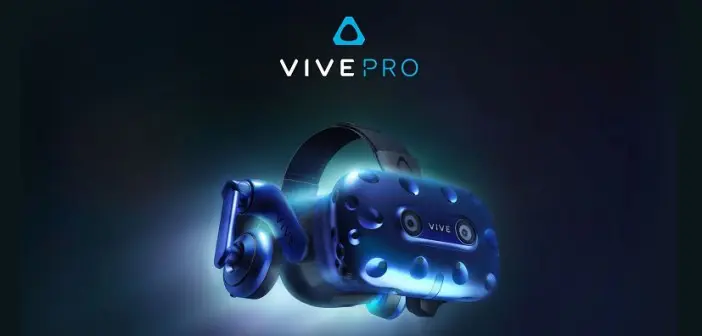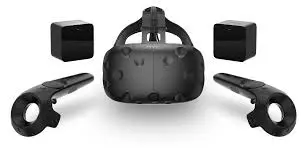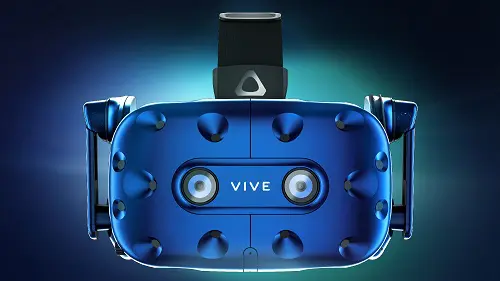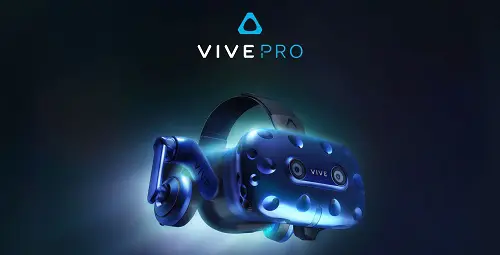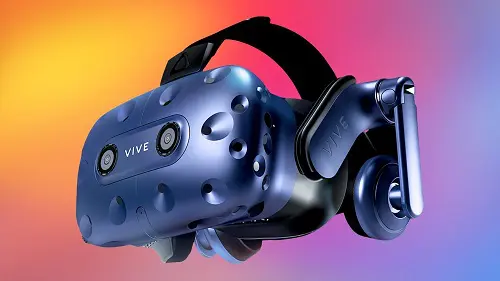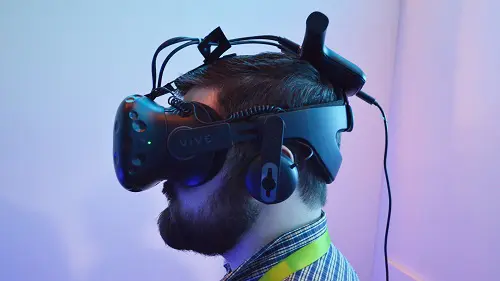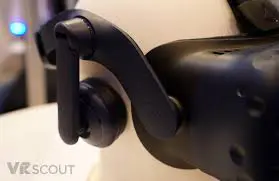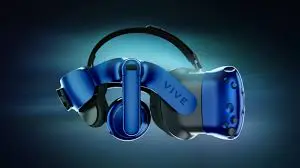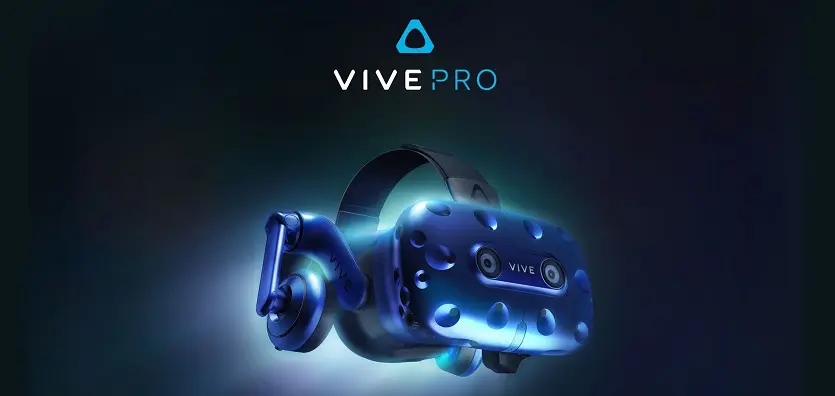
Bennett Ring
The consumer VR revolution may have begun with more of a whimper than a bang, with both the Oculus Rift Consumer Version 1 (CV1) and HTC Vive experiencing much lower sales volumes than anticipated, but this hasn’t stopped the technology growing exponentially faster than anticipated. The biggest leap forward is the pixel density of the displays used within; initial projections by NVIDIA in 2016 were that it would take at least five years to hit 4K x 4K screens per eye, but we’ve already seen prototypes from Pimax with 8K screens just 12 months later.
The first commercial VR HMD to hit the market with an improved pixel density is HTC’s new Vive Pro, aimed at professional VR developers, and it has a price tag to match. At AU$1,199 for just the HMD, with no controllers or Lighthouse tracking stations included, it’s a vast price increase compared to the original HTC Vive kit, which currently retails for $879 and includes two motion controllers and twin Lighthouse tracking stations. We recently got eyes-on with the Vive Pro, and were immediately impressed by the increased Pixels Per Inch, or PPI.
This is thanks to an increase from the original Vive’s resolution of 1080 x 1200 per eye, at 448 PPI, to the Vive Pro’s 1440 x 1600 per eye, or 615 PPI, a 37% increase. This means the screen-door effect, or sub-pixel grid array visibility, has been vastly improved. In practice, this makes it much easier to resolve fine detail, be it crisper text or distant features, which is especially noticeable in vehicle simulations with complex cockpits, as well as photograph-based scenes.
The screens are based on the same AMOLED panel technology of the original, running at 90Hz to deliver a motion-to-photon latency of approximately 7ms, though your mileage will vary depending on the GPU powering the HMD. Further investigation reveals the Vive Pro screens are the same as those used in Samsung’s Odyssey Mixed Reality HMD.
As with all consumer HMDs, the Vive Pro uses a Fresnel lens design to increase the field of view of each screen, up to 110 degrees. Unfortunately these lenses have the side effect of ‘God-rays’, where bright parts of the scene cause a corona towards the edge of the screen, but we definitely noticed an improvement when compared to the original.
The other major change is a new mounting design, which is much simpler to fit to each
user’s unique head-shape. Not only is it easier to mount, it also results in a much tighter fit, which is very important given that the Fresnel lens design has a sweet-spot; outside of this and the image blurs, but the tighter mount of the Vive Pro makes this less of an issue.
The exterior of the Vive Pro HMD now also includes two cameras, though only one is currently active, but
the plan is for the second to be used to recognise exterior objects. It’s possible that this may do away entirely with the need for exterior controllers, as the stereo cameras should be able to recognise the user’s hands, using kinetic detection algorithms similar to those found in the Leap Motion product.
The final chassis design change is the inclusion of twin 2.5-inch stereo headphone speakers, whereas the original required the use of additional headphones Sound quality is excellent, with very little distortion even when the volume was set to 100%. However, the speaker arms are a little short, so those with larger heads may find that they have difficulty in covering their ears entirely.
Due to the increased resolution of the displays, HDMI is no longer supported as a video source, instead using DisplayPort 1.2, along with a USB 3.0 Type C and USB 3.1 Type A plug, all of which connect to the exterior video link box. There’s still a 15-meter tether
cable between the HMD and the link box, but HTC has demonstrated a wireless kit which isn’t
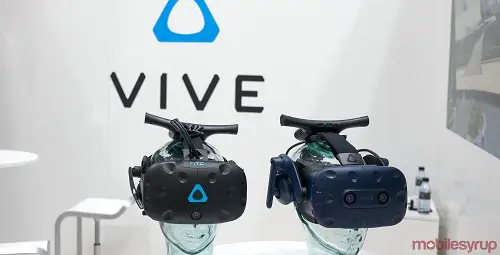
“Vive vs Vive Pro both with wireless adaptor”
on sale yet. While this does remove the issue of tripping over cables when in room-tracking mode, it does increase latency by an as-yet undisclosed amount.
While we were thoroughly impressed by the increase in image quality and improved mounting design, this device is aimed at professional VR developers, so we spoke to Mitchell Manganaro, Studio Manager at Melbourne-based VR developer Opaque media, to see how the improvements have impacted the company’s VR project design. According to Mr Manganaro, the biggest
enhancement from his perspective is both the improved resolution, as well as even better room-tracking. “With the Vive Pro the user gets a higher resolution screen, which is great for showing off even better-looking content. There is an even better advantage though, and it’s the second-generation tracking solution. Out of the box you get up to 10m x 10m of tracking space, and it will be scalable to 20m x 20m soon.” Unfortunately our test-space was limited to just 3m x 3m, so we were unable to test this increase.
User comfort is also a major upgrade from the original, with Mr Manganaro stating that, “The comfort of the device has been a point of praise around the studio.”. On the other hand, he also believes that the colour quality of the screens has been decreased, though the technical specifications don’t indicate a decreased colour quality.
While the Vive Pro makes it easier to resolve increased detail, developers are still targeting markets that are using lower resolution displays. As a result, content for these devices has to be built in mind for two different usage scenarios. “Creating content that will run on current hardware is key, as adoption rates for Vive Pro won’t be that high, (so we are) creating content for the Oculus Rift CV1 and HTC Vive 1.0, and then putting out content at higher resolution for Vive Pro.”
There’s no denying that the improved resolution results in a vastly improved user experience, but there is an accompanying leap in overall cost of ownership that we believe limits the Vive Pro to professional use only. Compared to $879 for the complete HTC Vive 1.0 kit, versus $1,999 for the
Vive Pro with twin controllers and Lighthouse base stations, the increase in price is hard to justify for consumer-focused users. Thankfully we should see the Vive Pro become part of the base Vive kit in the near future. We’ll be going hands-on with a variety of Windows Mixed Reality HMDs in the near future to see how they compare, which have an identical resolution as the Vive Pro. In the meantime, if you’re already an owner of the HTC Vive or Oculus Rift CV1.0, unless you’re a professional developer creating content for higher-resolution displays due in the near future, there’s no need to upgrade.

